The Making of Graphic Design Fundamentals
A blog by Veronica Krawcewicz
Developing your very own content is a challenge in terms of discipline and courage. Discipline is required when conflicting priorities come to play... and courage ... courage to put your brand and your passion out in public. The making of Graphic Design fundamentals was that type of challenge for us at Onlea. Each team member put their best foot forward to launch this online course and the results are exceptional. As a non-designer I personally learned so much from this course! We look forward to seeing what you design.
-- Adriana Lopez Forero, President
At Onlea we are always asking “What will you teach the world?”
Graphic Design Fundamentals (GDF) is our design team’s answer to that question. First envisioned in 2014, GDF reveals the components of great graphic design for those who haven’t taken a four year degree in Visual Communication Design (VCD).
About the Creation of the Course
Graphic Design Fundamentals is written by three University of Alberta Bachelor of Design graduates, Max Amerongen, Laila Steen, and Rachelle Bugeaud. In the creation of GDF the four of us (including myself) wanted to not only teach the basics of graphic design, but to also apply that knowledge. Every aspect, from the videos to the course notes, was considered. When creating the assets (imagery and examples) we regularly held design critiques. These led to noticeable improvements in each example.
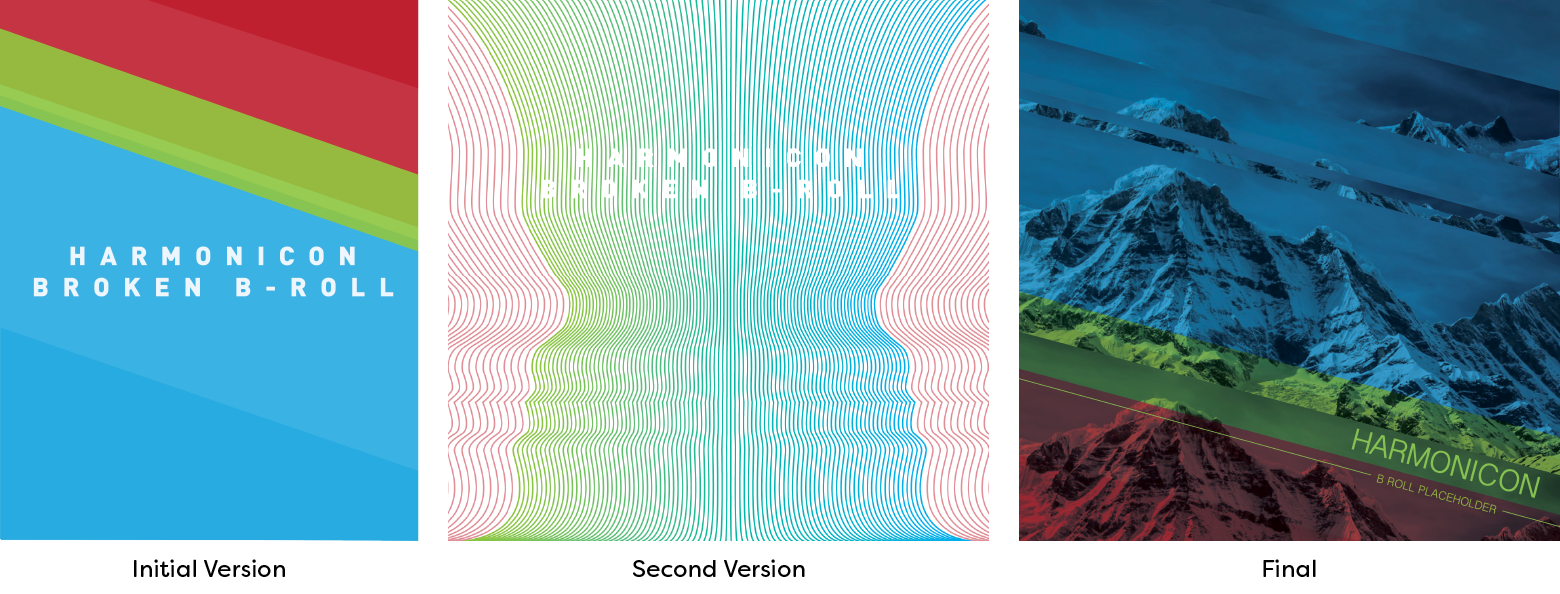
Sometimes the changes were more subtle:
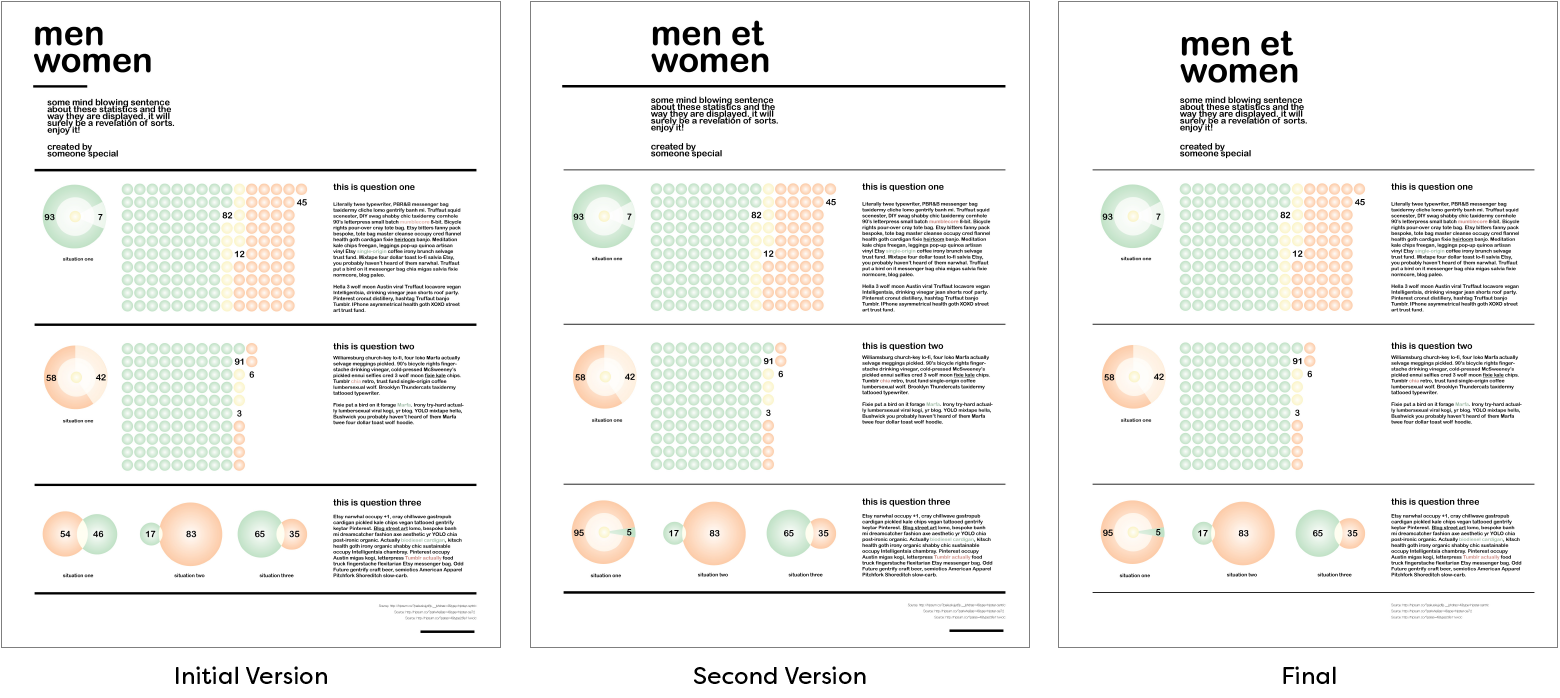
Other times the critique lead to a very specific change or a choice between two versions:
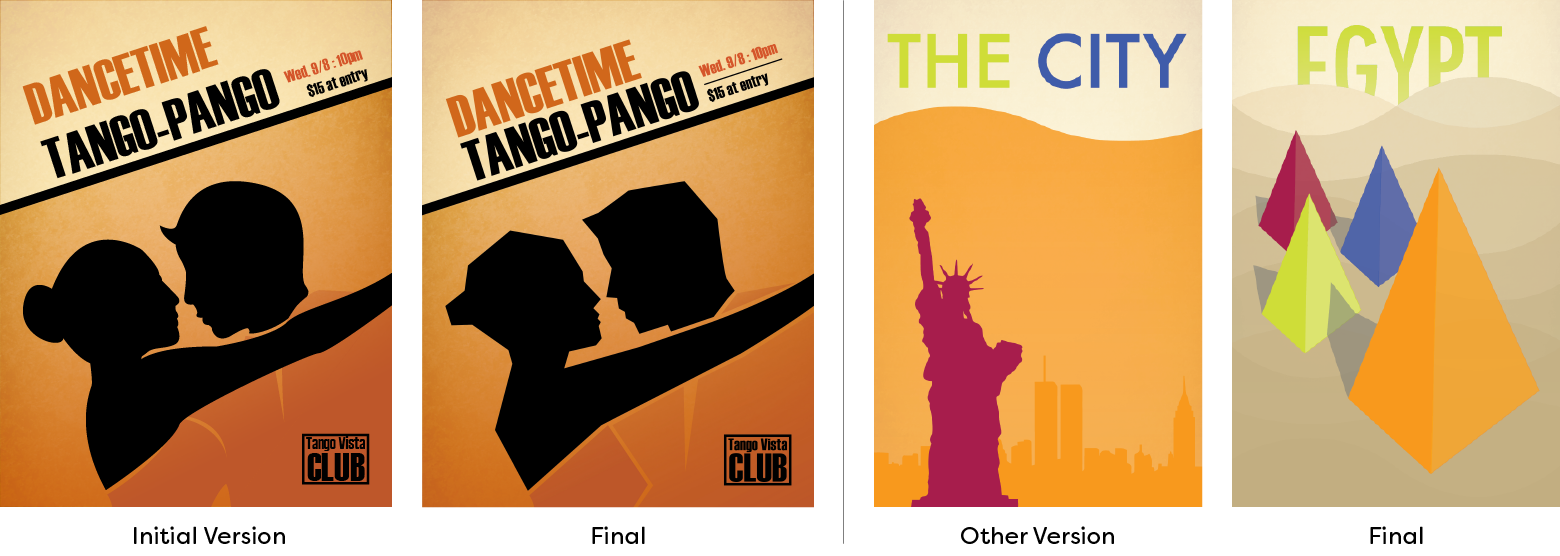
Or between a few different concepts:
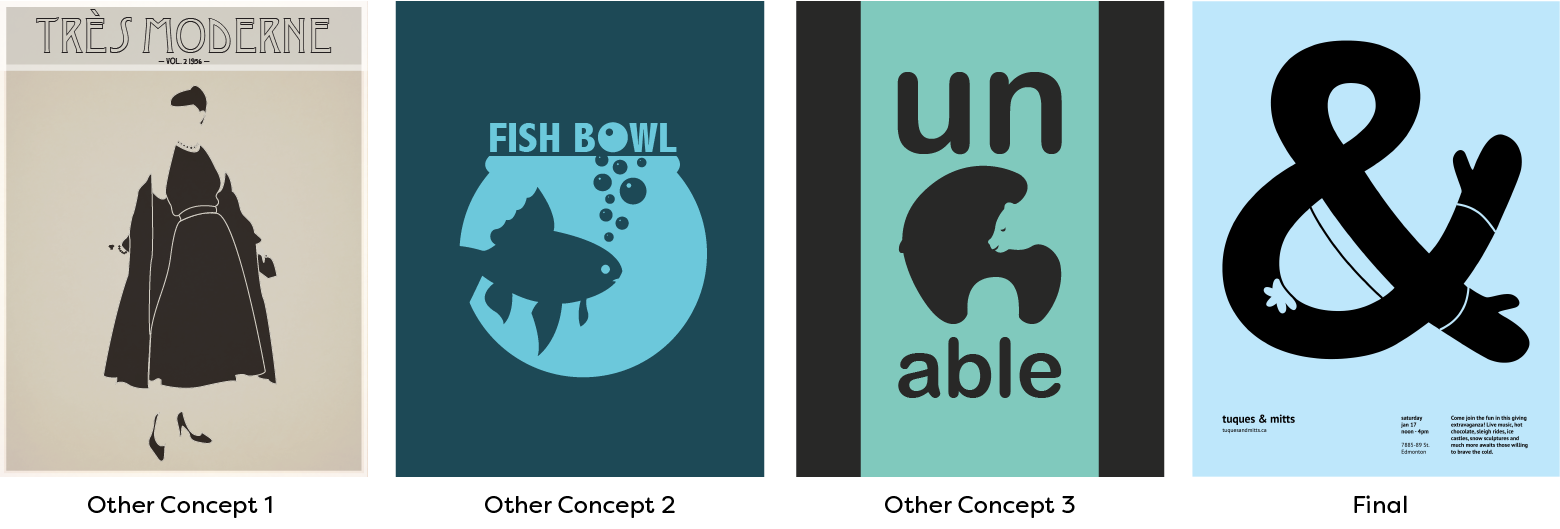
As graphic design is a visual endeavour, the course is filled with animations that help explain core concepts. These, and the visual look of the course itself went through a number of iterations.

Who is GDF made for?
Design is something many people do everyday. When we make a poster, or even compile a document, we are creating a designed object. The visual identity (brand) of companies and individuals alike is becoming more and more important in our crowded world. This course is for anyone who would like to ensure they visually present themselves, or their companies, in a professional way. This includes small business owners, administrators, or anyone creating designed work that represents their company, or themselves.
This course is also for anyone who enjoys design tasks and would like to improve on those. Would you like to know enough to design your own wedding invitations, make good event posters, or design your own business cards? This course can start you on the right direction to being able to create your own outstanding design work.
As well, those in related areas of design expertise who are expected to just know graphic design but were never taught, would benefit from taking this course to fill in any gaps in their knowledge. Students thinking about going into design would benefit from this overview course as well.
Structure of the Course
The course is broken down into five lessons. The first teaches you about playing with form, and how humans perceive shapes. This is the foundation without which explaining type and layout would be difficult. The point of this lesson is not to memorize the terms, but to understand the concepts and contemplate how you see the theory applied in everything from logos to magazine covers.
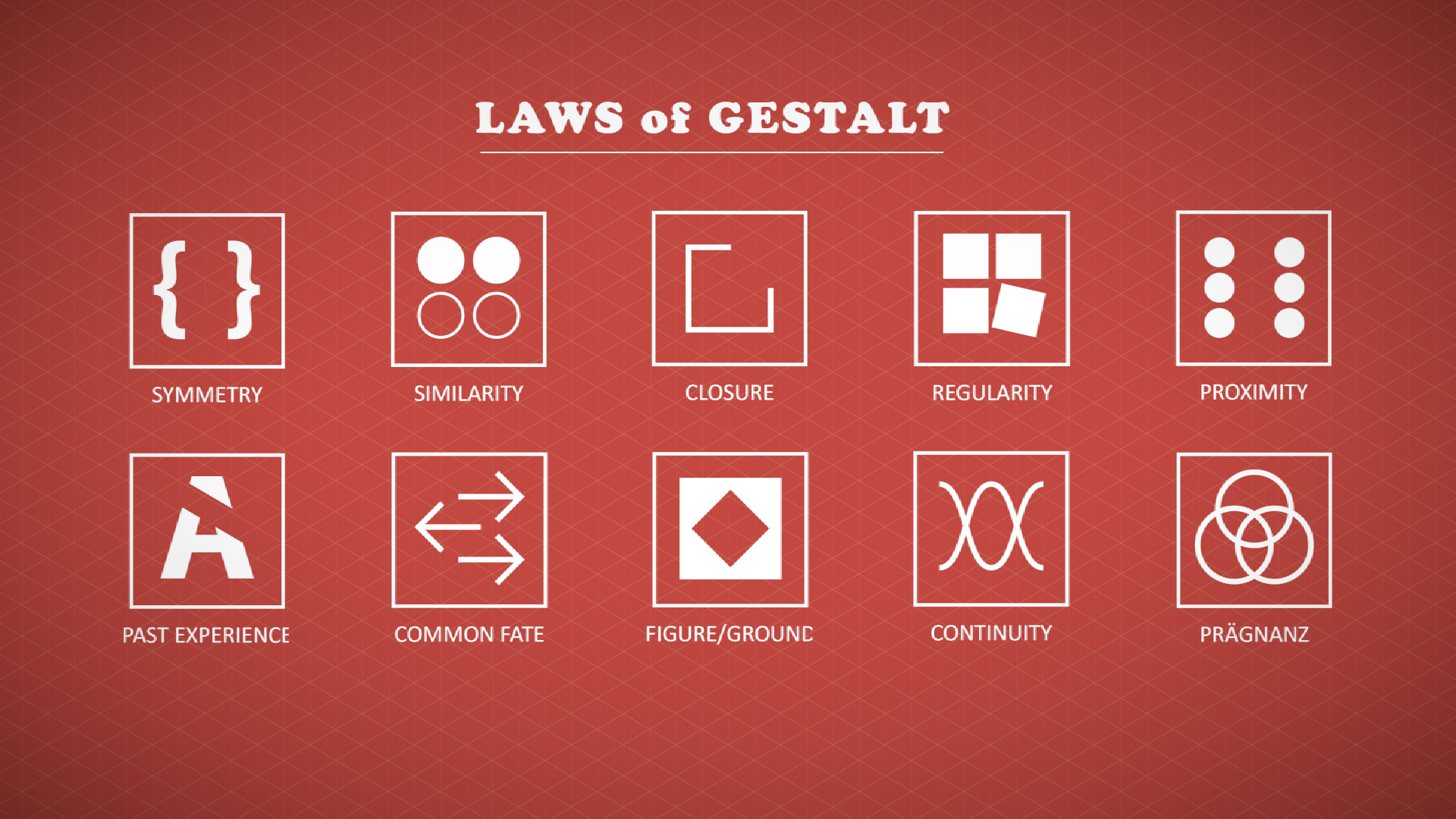
The second lesson is on colour. This covers colour theory as well as colour associations. These are important concepts to understand, even if all your designs are black and white.
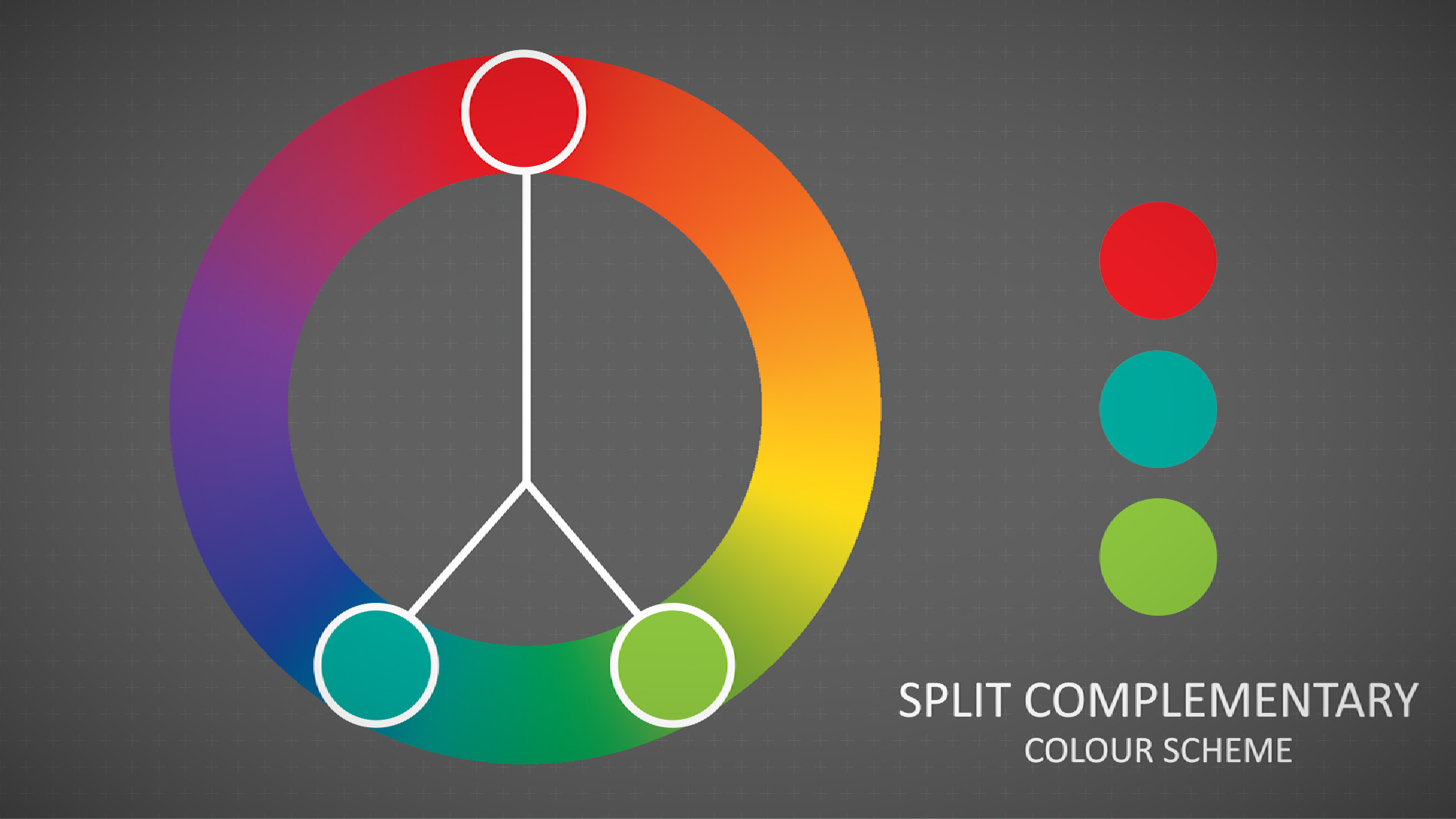
Third-off is typography. Ever wonder why so many graphic designers care so much about fonts? This is because of how important and complicated they are. We won’t be teaching you how to design a font - as that could be a course in itself. Rather, we teach you about working with type and text blocks. This might sound simple, but there is a lot that goes into this that you might not be aware of. For example, have you ever heard about rivers? No, not the body of water. Learn what these are, and how to avoid them in this lesson and so, so much more.
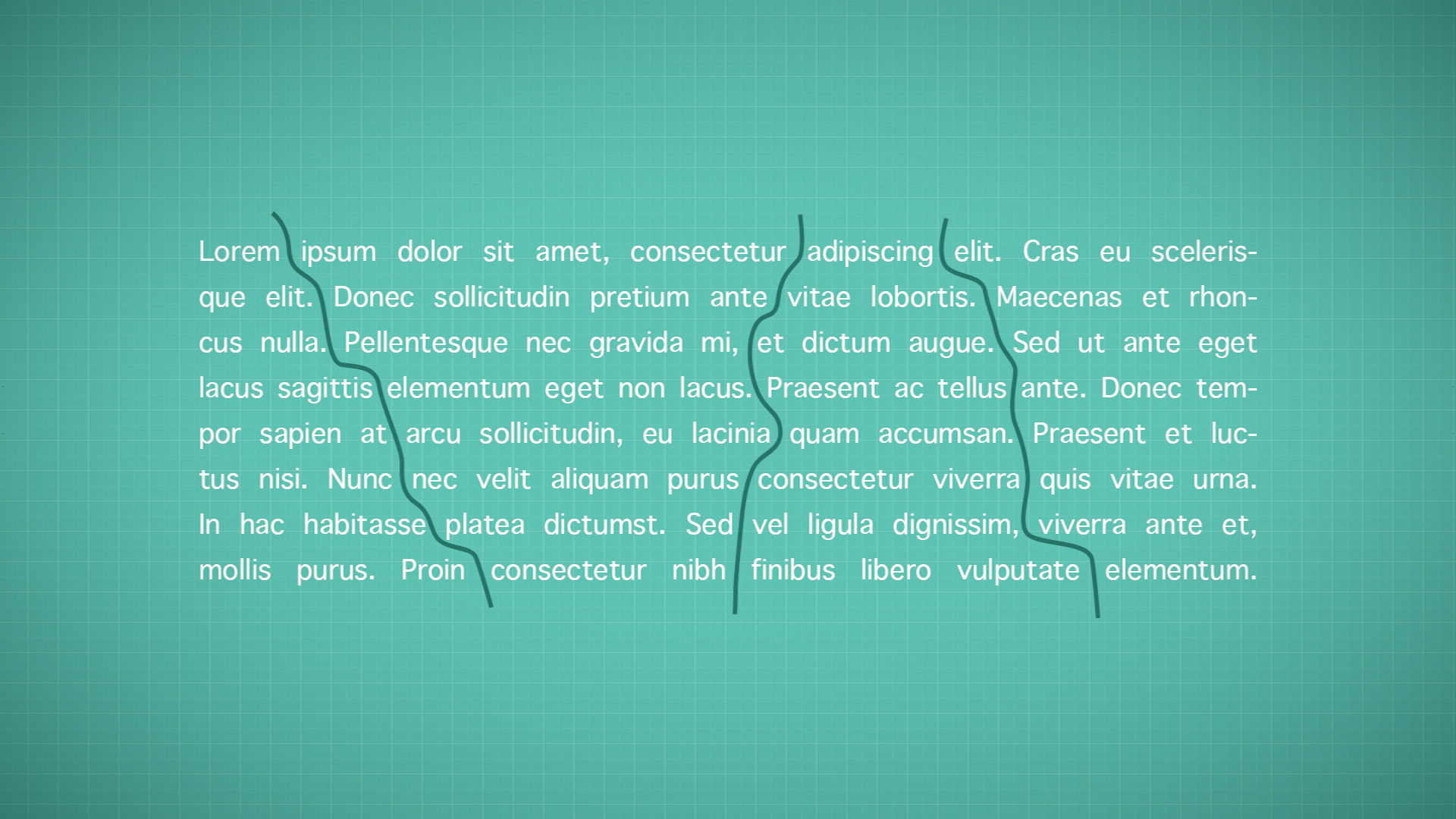
The fourth lesson is on layout. Ever wonder why newspapers have columns and books don’t? You’ll learn about this and different grid types (rulers that structure your documents and designs) in this lesson. Here we also cover information you will need to know before sending your work off to a printer, and learn about working with imagery including how to avoid pixelation (when you start to see the squares in your images).
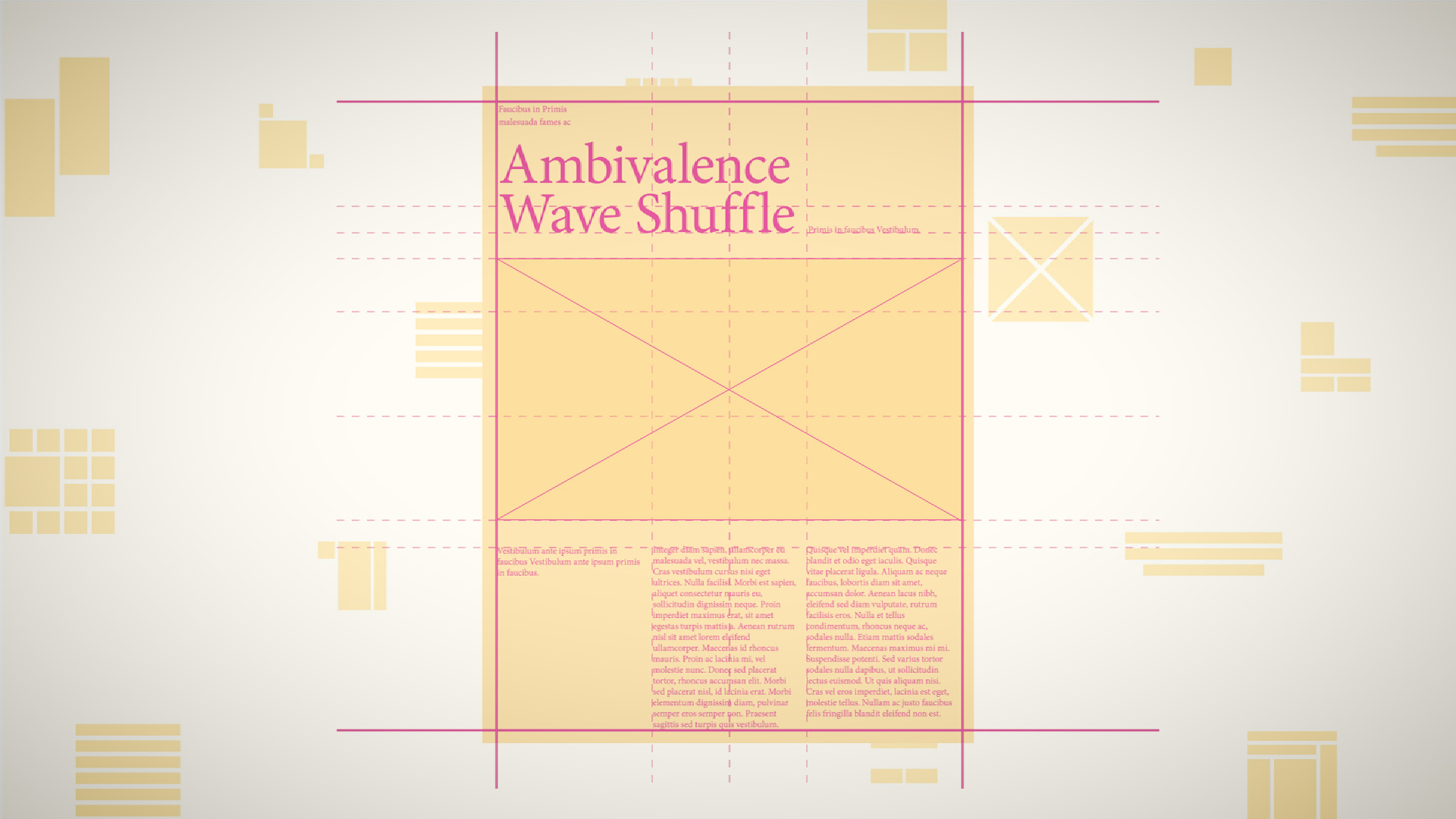
In the last lesson we dive into the concept of visual identity, and visual identity packages. We talk about breaking design rules. Finally we end the course on the topic of critiques. Yes, you too can learn how to run a successful critique so you can get the input you need to keep improving your design work - just like we did in the creation of this course.

Hope to see you there and happy designing!
Enroll Now!